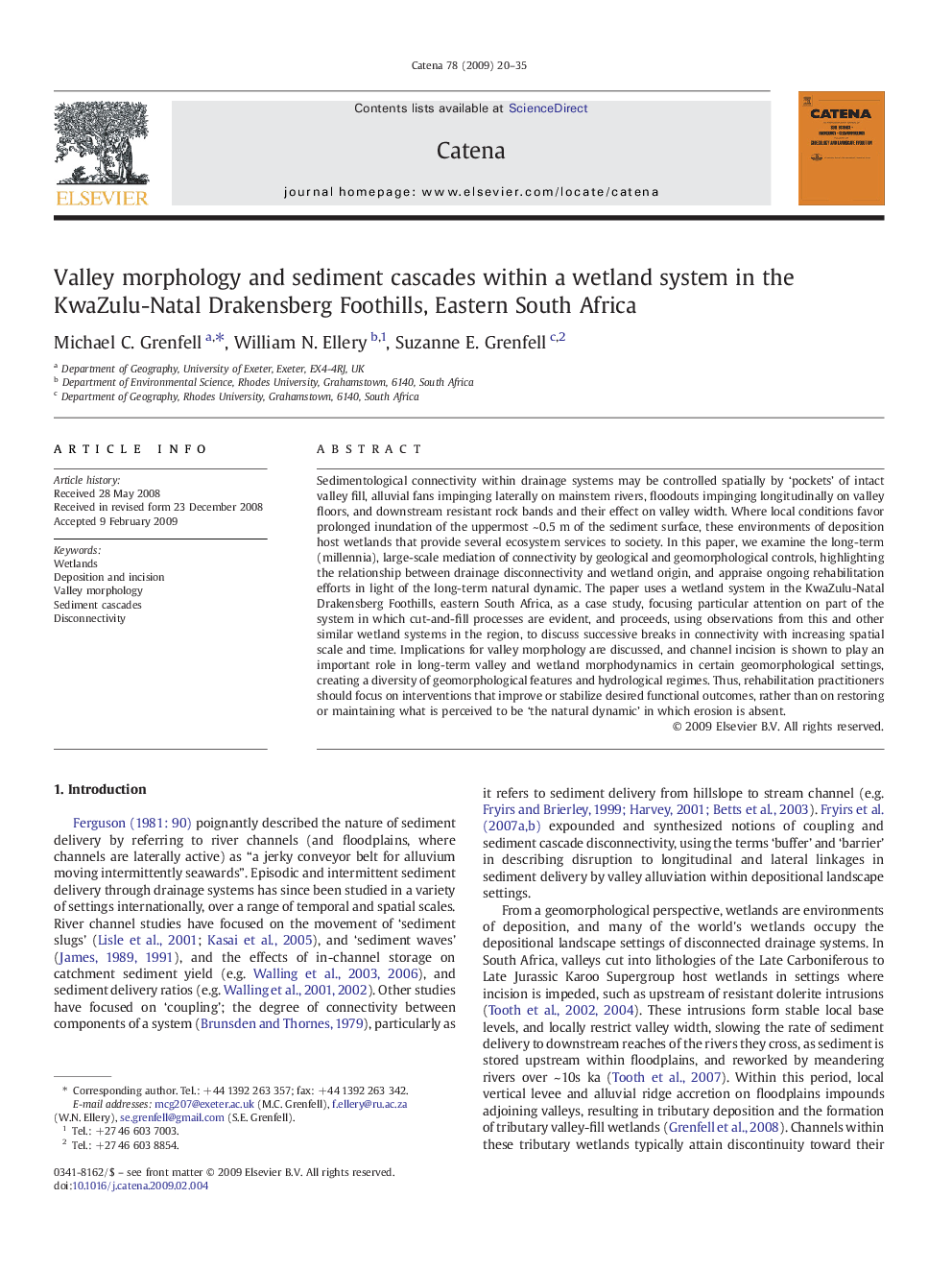| Article ID | Journal | Published Year | Pages | File Type |
|---|---|---|---|---|
| 4572215 | CATENA | 2009 | 16 Pages |
Sedimentological connectivity within drainage systems may be controlled spatially by ‘pockets’ of intact valley fill, alluvial fans impinging laterally on mainstem rivers, floodouts impinging longitudinally on valley floors, and downstream resistant rock bands and their effect on valley width. Where local conditions favor prolonged inundation of the uppermost ~ 0.5 m of the sediment surface, these environments of deposition host wetlands that provide several ecosystem services to society. In this paper, we examine the long-term (millennia), large-scale mediation of connectivity by geological and geomorphological controls, highlighting the relationship between drainage disconnectivity and wetland origin, and appraise ongoing rehabilitation efforts in light of the long-term natural dynamic. The paper uses a wetland system in the KwaZulu-Natal Drakensberg Foothills, eastern South Africa, as a case study, focusing particular attention on part of the system in which cut-and-fill processes are evident, and proceeds, using observations from this and other similar wetland systems in the region, to discuss successive breaks in connectivity with increasing spatial scale and time. Implications for valley morphology are discussed, and channel incision is shown to play an important role in long-term valley and wetland morphodynamics in certain geomorphological settings, creating a diversity of geomorphological features and hydrological regimes. Thus, rehabilitation practitioners should focus on interventions that improve or stabilize desired functional outcomes, rather than on restoring or maintaining what is perceived to be ‘the natural dynamic’ in which erosion is absent.
